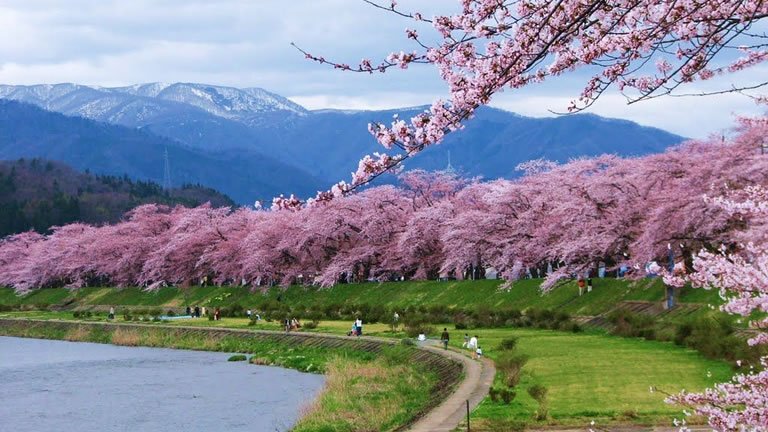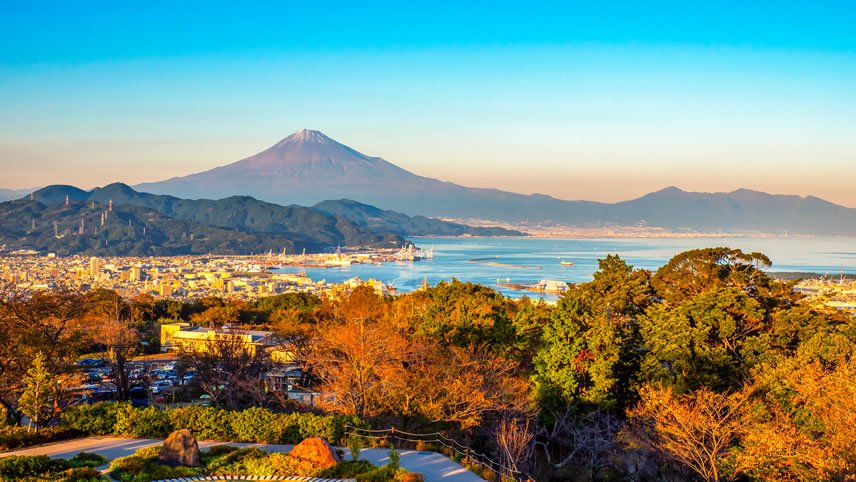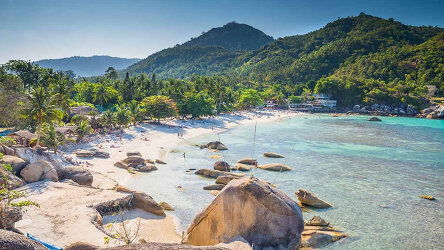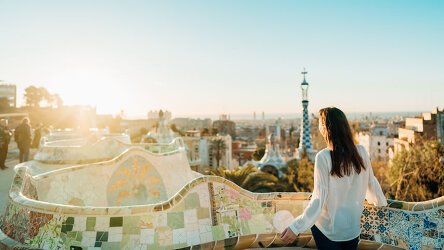Overview
Cruise Itinerary
Seoul is rich with history and futuristic charm, and makes a perfect day trip when making a port of call in South Korea.
Embrace the culture at historical sites like the Gyeongbokgung Palace, built during the Joseon dynasty in 1395. Wander through the bustling markets of Insadong and indulge in authentic Korean cuisine like tteokbokki (spicy rice cakes) and bibimbap (mixed rice with vegetables and meat).
Dive into the world of K-Pop, a global cultural phenomenon. Explore entertainment districts like Gangnam, visit K-Star Road in Apgujeong, and consider catching a live performance or visiting a themed cafe.
Ships will dock in Incheon (40km/24mi away, 30 minutes away by car).
Incheon is a vibrant port city in South Korea, with ships docking at the Incheon International Cruise Terminal. The terminal itself offers excellent facilities, including duty-free shops and local crafts.
Incheon serves as the port of call and gateway to the city of Seoul, the capital of South Korea, and is just over 40km/24mi away (just over 30 minutes away by car).
If staying local, discover Incheon's unique charm by exploring its historic sites like Chinatown and the Incheon Grand Park. For a taste of the local cuisine, wander through the bustling markets and sample delicacies like Jajangmyeon and Dakgangjeong.
Often called the 'Island of the Gods,' Jeju island a volcanic island off the coast of South Korea is home to some of the Korean Peninsula's most beautiful natural sites is renowned for its unique natural landscapes, including the Hallasan Mountain, a dormant volcano and the highest peak in South Korea.
The island's diverse attractions range from beautiful beaches like Hyeopjae and Hamdeok, to the mysterious Manjanggul Lava Tube, a UNESCO World Heritage site.
Jeju's rich cultural heritage is evident in its local cuisine, traditional Haenyeo (female divers) culture, and folk villages, making it a fascinating destination for those seeking both relaxation and adventure.
When it comes to the entertainment on Norwegian Spirit, there's never a dull moment. Tickle your funny bone during our comedy variety show inside the Stardust Theatre. Enjoy a magical evening with our magician and comedy show. Or don your best white attire and dance the night away during our White Hot Party. It's showtime. All the time.
Head to Kanazawa and the Ishikawa Prefecture and you step back in time to the Edo Period (1603 to 1886), the height of samurai culture.
Because most of the original architecture is still preserved, you can expect an eclectic mix of samurai streets, teahouses graced by geisha, thought-provoking modern museums and delectable foodie trends (gold-leaf ice cream anyone?). The crowning jewel of Kanazawa is the sensational Kenrokuen Garden, where locals and tourists visit to soak up the ever-changing seasonal beauty.
Akita is the capital of Akita Prefecture, which is renowned for Akita dogs, high-quality rice and sake, and lively folk festivals. Among the area's main attractions are its natural beauty of mountains and the sea, hot springs and the town of Kakunodate, which preserves one of Japan's most interesting samurai districts. Ships will dock at the Akita Port Cruise Terminal.
Top Things to Do in Akita:
- visit the Kakunodate Samurai District
- sample sake at a local brewery
- visit Lake Tazawa, Japan's deepest lake
- take in the view from Mt. Kanpuzan
Otaru, located on the northwest coast of Hokkaido, Japan, is a charming port city known for its well-preserved architecture and scenic canals. The Otaru Canal, lined with historic warehouses, is a popular attraction, especially beautiful when illuminated at night. A stroll along the canal offers a glimpse into the city's past as a bustling trade hub.
The city is also famous for its glassworks, music boxes, and sake distilleries. Visitors can explore the Otaru Music Box Museum and the Kitaichi Glassworks to experience the local craftsmanship. The vibrant Sakaimachi Street, with its array of shops and cafes, is perfect for enjoying local delicacies and shopping for unique souvenirs. With its blend of history, culture, and picturesque scenery, Otaru is a delightful destination in Japan.
Hakodate is one of the most popular city destinations in Japan. Here you can experience diverse dynastic architecture, the last Shogun battlefield and enjoy shimmering night views from Mount Hakodate. Located along Hokkaido's southwestern tip, you can immerse yourself in history within the star-shaped walls of Fort Goryokaku and explore the site of famous battles that transformed Japan.
Enjoy a mouth-watering seafood rice bowl (kaisen-don) from the Hakodate Morning Market and then relax with a soak in the Yunokawa hot springs on Hakodate's outskirts.
Enjoy a four-course meal and a great bottle of wine. Or grab a burger hot off the grill. Dress up. Dress down. Sit with your friends or make new ones. Dine inside or Oceanside along The Waterfront. Only Norwegian offers the freedom and flexibility of Freestyle Dining, which means no fixed dining times or pre-assigned seating. So follow your mood, not a schedule.
Mount Fuji, Japan's most sacred volcano, stands at 12,388 feet and offers a mesmerizing landscape. Recognized by UNESCO as a "place and source of artistic inspiration," this snow-capped peak is a must-visit. Start with a trip to the Fuji Five Lakes region for breathtaking views and outdoor activities like hiking and boating.
Explore the cultural and spiritual side of the region at the Fujisan Hongu Sengen Taisha Shrine. Nearby, Oshino Hakkai, a traditional village with clear spring ponds and thatched-roof houses, offers a glimpse into Japan's past. For a picture-perfect view of Mount Fuji, visit the Chureito Pagoda, especially stunning in spring with cherry blossoms.
This port city is not just a gateway to Japan's iconic volcano but a treasure trove of experiences, from the bustling fish market of Shimizu to tranquil walks through lush green tea plantations. The allure of Shimizu lies in its ability to offer moments of Zen amidst the vibrancy of city life, inviting travelers to discover its rich culinary heritage, including the freshest sushi and sashimi, sourced directly from Suruga Bay. Cruise ships anchor at Shimizu Port, conveniently located approximately 10 kilometres (about 6.2 miles) from the heart of Shizuoka City.
Tokushima is renowned for its vibrant Awa Odori Festival, one of the largest dance festivals in Japan held every August. This lively event fills the city with music, dance, and colorful costumes, capturing the spirited culture of the region. Throughout the year, visitors can experience this traditional dance at local theaters and cultural centers, offering a glimpse into Tokushima's rich heritage.
The city is also a gateway to the stunning Iya Valley, known for its dramatic mountain scenery and historic vine bridges, perfect for nature enthusiasts and adventurers. Additionally, the Yoshino River provides thrilling white-water rafting experiences, making Tokushima a diverse destination that marries cultural festivities with outdoor adventure.
Himeji, located in Hyogo Prefecture, Japan, is renowned for its magnificent Himeji Castle, a UNESCO World Heritage site and a quintessential example of classic Japanese castle architecture. This brilliantly preserved structure, often referred to as the "White Heron Castle" due to its elegant white façade, stands as a testament to the craftsmanship and strategic design of feudal Japan.
Beyond the castle, the Koko-en Garden next door offers a peaceful retreat with beautifully landscaped gardens representing Edo-period styles. Visitors can also explore the vibrant city centre, where modern shops and restaurants blend seamlessly with traditional tea houses. Himeji provides a rich cultural experience, combining historical architecture with the charm of a lively Japanese city, making it a must-visit for those exploring the Kansai region.
Nagoya, located in the heart of Japan’s Aichi Prefecture, is a hub of automotive and technological innovation, home to industry giants like Toyota. The city's rich history is encapsulated in the iconic Nagoya Castle, rebuilt with modern techniques while preserving its historical facade. The castle grounds bloom with cherry blossoms in spring, drawing visitors for both their beauty and historical significance.
Culturally, Nagoya is distinguished by its unique cuisine, including hitsumabushi (grilled eel on rice) and kishimen (flat wheat noodles), which reflect the region’s culinary creativity. For those interested in technology and industry, the Toyota Commemorative Museum of Industry and Technology provides an insightful look into the manufacturing processes that shaped modern Nagoya and the global automotive industry.
Tokyo, Japan's bustling capital, offers an eclectic mix of tradition and modernity. Begin your adventure with a visit to the Asakusa district, home to the ancient Senso-ji Temple, Tokyo's oldest and most significant temple. Nearby, Nakamise Street is perfect for souvenir shopping and sampling traditional snacks.
For a panoramic view of the city, head to the Tokyo Skytree, one of the world's tallest towers. Shibuya Crossing, one of the busiest pedestrian intersections, is a must-see for its sheer scale and energy. To experience tranquility, visit the serene Meiji Shrine, nestled in a lush forest in Shibuya. Don't miss trying Tokyo's renowned sushi at Tsukiji Outer Market or exploring the vibrant Harajuku district for trendy fashion and unique cafes.
Yokohama Port serves as a gateway for travelers heading to Tokyo, located approximately 30 kms (about 19 miles) north of the port. The journey to Tokyo can take around 30 to 45 minutes by train. The Osanbashi Yokohama International Passenger Terminal is the main docking site for cruise ships. The most efficient way to travel is by train, with the Minatomirai Line directly connecting Yokohama to Shibuya, a major hub in Tokyo. This allows visitors to easily access famous sights such as the Shibuya Crossing, Meiji Shrine, and the vibrant district of Shinjuku. Given the limited time typical of cruise stopovers, planning ahead to prioritize which attractions to visit is advisable.
Life Onboard Norwegian Spirit

Home to well appointed staterooms and suites, fabulous dining options, and activities for everyone. Travel in style on Norwegian Spirit. Read more

No fixed dining times, no pre-assigned seating, freedom and flexibility to follow your own schedule. Read more

Sweat it out or slow it down with facilities to unwind your body and your mind on board Norwegian Spirit. Read more
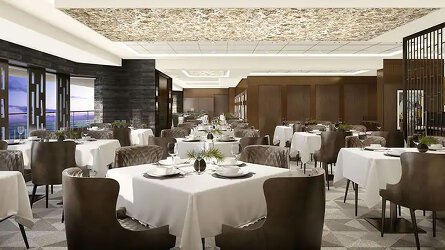
Dine inside or oceanside. Formal or casual. Perhaps even start with dessert. Dining on board Norwegian Spirit is all about choice. Read more

There’s never a dull moment with activities for everyone packed from top to bottom and from bow to stern on Norwegian Spirit. Read more

Embrace the holiday spirit and enjoy evenings brimming with entertainment. You'll be spoilt for choice with a stellar line up on board. Read more

Availability Click on prices below to view cabin upgrades and details
Tour & cruises prices are per person. Prices shown have savings applied, are subject to availability and may be withdrawn at any time without notice. Pricing and trip details are correct at this point in time, however are subject to confirmation at the time of booking and are subject to change by Norwegian Cruise Line. For cruise itineraries, cabin images are sourced from Norwegian Cruise Line. These should be treated as indicative only. Cabin inclusions, upholsteries and room layout may differ to the image(s) shown depending on the ship selected and your sailing dates.


